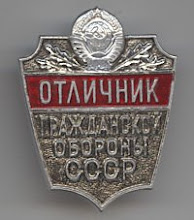Recently there has been a flurry of attention in the English-language blogosphere about the Russians' prospective SVBR reactor series, inspired by this Oil Drum post. While the SVBR development program is hardly new, it has received important endorsements from the Russian government in recent months that suggest that the SVBR reactors will actually see the light of day.
SVBR stands for Svintsovo-vismutovyi bystryi reaktor, or in English "Lead-Bismuth Fast Reactor." And this is exactly what the SLBR is--an evolved version of the lead-bismuth fast reactor which powered the Alpha submarine. The SVBR is one of three liquid-metal-cooled reators currently under development in Russia, along with the sodium-cooled BN-series and the lead-cooled BREST. Unlike the lead- and sodium-cooled reactors, which Rosatom ultimately envisions as very large (1600+ MWe in the case of the case of the BN-series), the SVBR is designed as a small, modular, and passively-safe reactor.
The reason I think that this is interesting is because I am convinced that such relatively small modular reactors are the future of nuclear power, and the SLBR is the Russian entry into this field, along with the Pebble-Bed Modular Reactor, the NuScale, and others. Furthermore, with Moscow's support the SLBR has better odds going for it than most of the other perspective modular designs.
The SVBR is currently envisioned in three sizes: 10MWe, 75MWe, and 100MWe. The first is intended for various portable and remote uses, incuding electricity and heat. (Ironically, I believe that the SVBR-10 meets Amory Lovins' definition of "micropower.") The 75MWe version was conceived as a way of reusing the equipment at aging Russian VVER-440 reactors. As described here, four SVBR-75 modules will replace the characteristic VVER steam generators within existing plant buildings and take advantage of existing turbomachinery. It's a very elegant idea, and it's easy to see why such a proposal would appeal to Rosatom. Finally, the SVBR-100 would be used in various stand-alone applications, including combined-heat-and-power and clustered in groups to create large power plants.
According to its designers, the SVBR will possess passive safety thanks to its "monobloc" design which incorporates the entire primary coolant loop in the reactor vessel, the physical and nuclear characteristics of the lead-bismuth coolant, and the placement of the reactor vessel in a pool of water which will serve as a passive emergency cooling system. The arguments for the SVBR's safety are, in my view, quite convincing, and it is clearly much safer than the current VVERs and the BN-series. I have my doubts, however, about whether the lead-bismuth coolant is quite friendly enough in operational practice to allow the general civilian application of these reactors. The Alpha submarine program, after all, suffered myriad difficulties with their lead-bismuth reactors and the expectation of widespread use of these reactors in the Soviet navy went unrealized. Gidropress believes that they have solved the attendant materials and design issues associated with lead-bismuth coolant, however. Only when the construction of a prototype SVBR will ascertain whether or not this confidence is justified. Furthermore, bismuth is rare, but geological exploration in Russia has already located enough of the element for hundreds of SVBR reactors.
Besides use repowering VVER-440s and building new electrical and heating plants within Russia, Rosatom also envisions the SVBR as a profitable export item. Anna Kudriavtseva, director of the department of research and scientific-technical policy at Atomenergoprom, reported at a conference last November that the SVBR could conceivably take 10-15% of the world market for small and medium-sized reactors, projected by the IAEA as 500-1000 units by 2040 and a potential value of $600 Billion. To this end the government is investing 16 Billion rubles in the project (about $500 million at current exchange rates), with a view to complete development work by 2017 and to have a pilot plant in operation by 2020. Although certainly less immediate than one might like, it appears that the SVBR will enter the commercial market at around the same time as the PBMR and other competing modular concepts.
Although the cost estimates I can find for the SVBR are not entirely reliable (they are, after all, made for an as-yet undemonstrated reator), they indicate that the SVBR is likely to be more economical than either the VVER or the ruinously expensive BN-series. This makes me wonder why Rosatom's expectations seem to belimited to sales of a few hundred units; barring unforseen events the SVBR would be its most attractive product both within Russia and on the export market by the early 2020s. By then there will probably be enormous demand for an economical, passive-safe nuclear reactor like the SVBR--a demand which Rosatom may be in a highly advantageous position to fill. I am heartened, however, by the fact that the NRC seems to be pondering the adoption of regulations encouraging the development of small, modular reactors. Hopefully the US won't abandon this critical arena to the Russians.
Monday, June 01, 2009
Subscribe to:
Comments (Atom)

